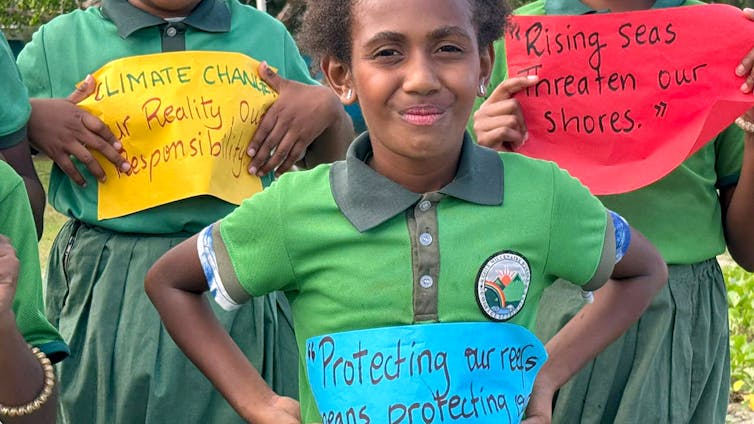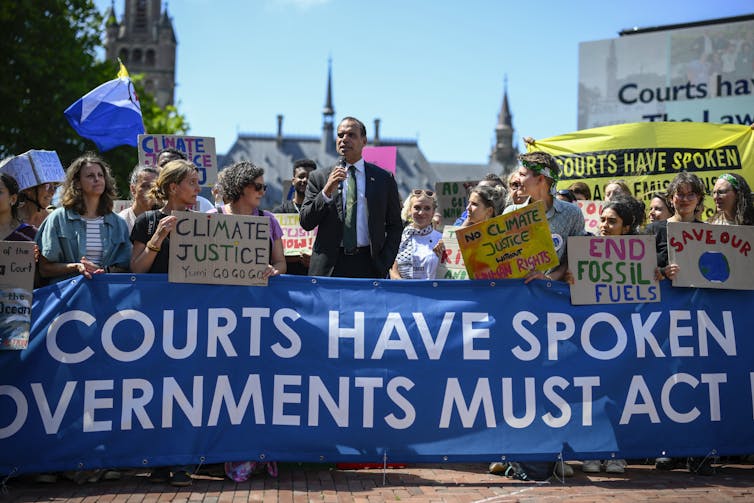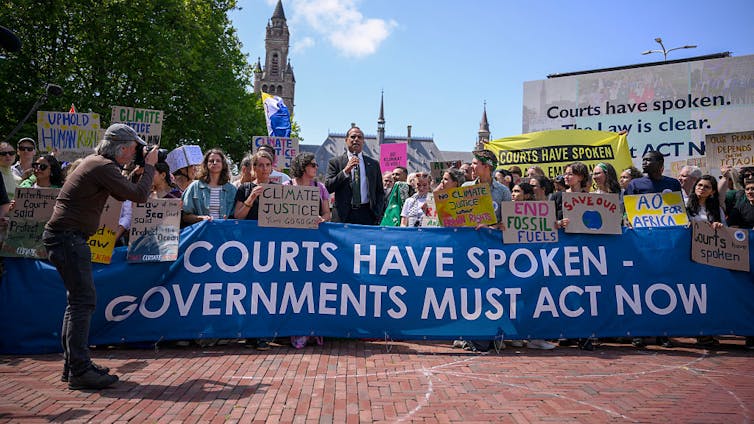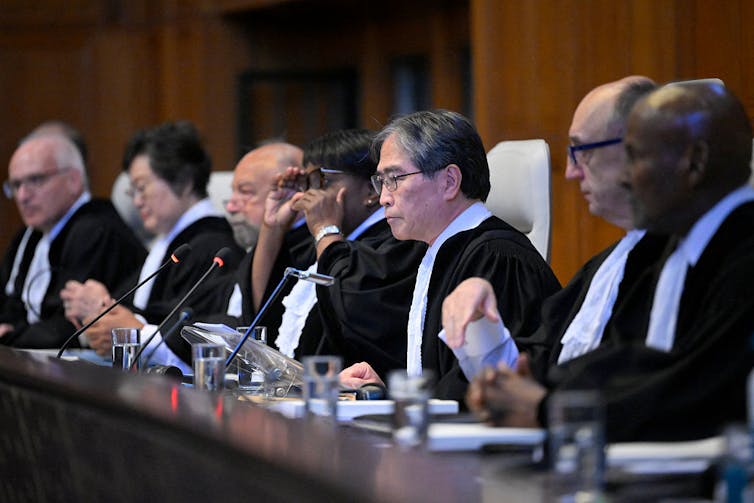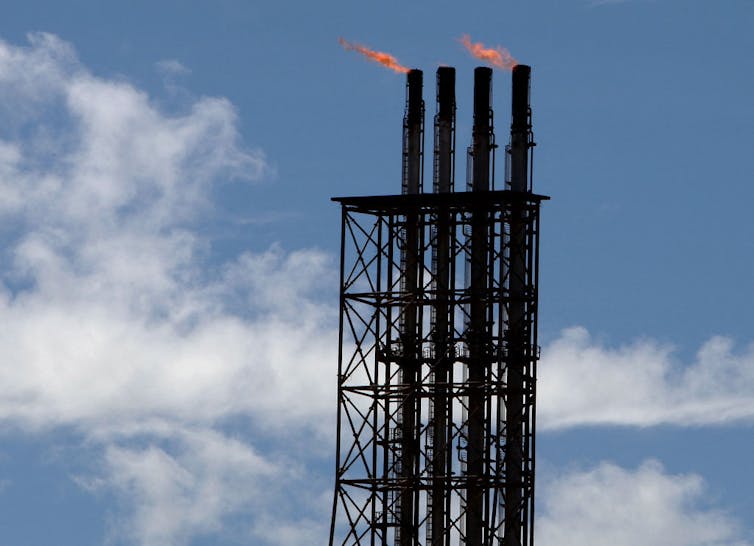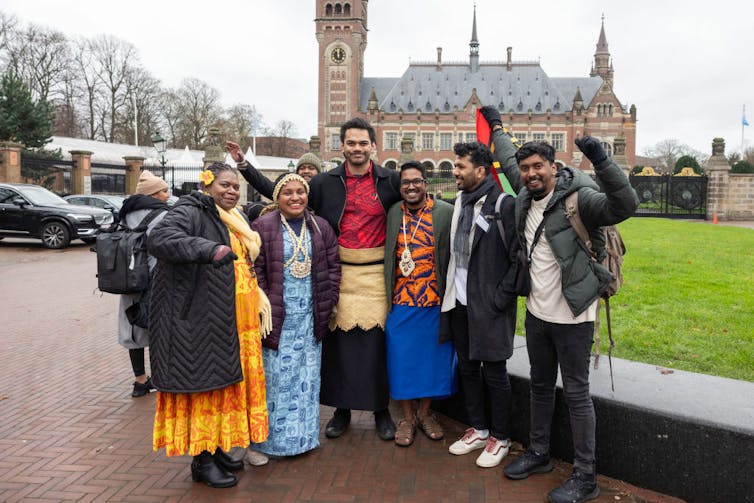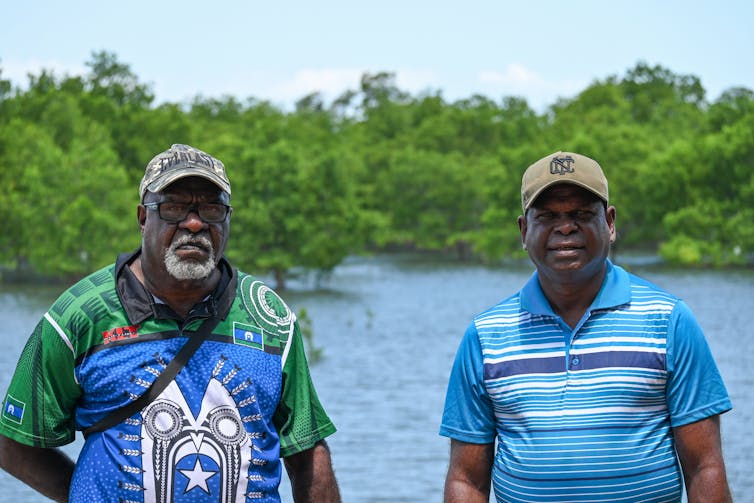The United Nations Climate Change Executive Secretary, Simon Stiell, has urged the Australian government to set an ambitious 2035 emissions reduction target, declaring “bog standard is beneath you”.
In a Monday speech, Stiell says, “don’t settle for what’s easy. Go for what’s smart by going big”.
His speech, hosted by the Smart Energy Council, comes ahead of his meeting with the Minister for Climate Change and Energy, Chris Bowen, in Canberra on Tuesday. Australia must submit its 2035 target under the Paris climate agreement by September. The Climate Change Authority has yet to deliver its advice to Bowen on the target. Previously, it has pointed to a target of between 65% and 75% reduction on 2005 levels.
The authority says on its website:
development of the 2035 targets advice is currently underway. This includes complex whole-of-economy modelling, policy analysis, consultation and consideration of international trends in climate action.
Stiell said Australia had a strong economy and among the world’s highest living standards. “If you want to keep them, doubling down on clean energy is an economic no-brainer.
"So the choice is clear. The question is: how far are you willing to go?
"The answer is due in September – when Australia’s next national climate plan is due. This isn’t just the next policy milestone. It’s a defining moment.”
Stiell said this was the moment for a climate plan that did not just write a vision into policy, “but delivers in spades for your people.
"Go for what will build lasting wealth and national security.”
He said this could be “Australia’s moment”.
“You’ve got world-class resources, a skilled, inventive workforce, and a A$22.7 billion plan – Future Made in Australia – with real ambition behind it.
"You’ve doubled renewable capacity since 2019.
"You’ve enshrined targets in law, and you’ve got strong, long-term policy signals.”
On the other side of the coin, Stiell warned if climate change was unchecked it would cripple Australia’s food production, and the country could face $6.8 trillion GDP loss by 2050.
“Living standards could drop by over $7,000 per person per year. And rising seas, resource pressures, and extreme weather would destabilise Australia’s neighbourhood – from Pacific Island nations to Southeast Asia – threatening your security.”
Bowen will also be hoping for some intelligence from Stiell on whether Australia’s bid to host next year’s COP will succeed.
Meanwhile, the push continues within the Coalition from those who want to dump its commitment to the net zero emissions by 2050 target.
The Western Australian Liberal party state council on the weekend called for the federal opposition to abandon the target. The motion came from the party’s Canning division, which is the seat held by frontbencher Andrew Hastie.
Hastie, speaking after it was carried, said it sent a “clear signal” to Australians that “we stand for something”.
In his weekly newsletter to subscribers, Hastie denounces the “net zero scam”.
“The Net Zero economy favours big, foreign, commercial interests that employ platoons of sophisticated lobbyists to protect the legislated system of climate taxes, subsidies, and penalties that favours renewable energy.
"They cloak their commercial interests in the language of climate and crisis and emergency.
"The Labor Government is their enabler.”
The opposition has a review of its energy policy underway that Hastie, despite being in the shadow cabinet, appears to be pre-empting.
In the House of Representatives on Monday, the Nationals Barnaby Joyce introduced his private member’s bill to scrap Australia’s commitment to net zero.
“Net zero is going to have absolutely no effect on the climate whatsoever. The vast majority of the globe in both population and GDP are not participating in it, he told the house.
"So why are we doing this to ourselves?”
It had changed the standard of living for many Australians, he said. “Our GDP per person is going down. People are becoming poorer. If you go into shops they talk about 30 to 40% of their costs being energy”. In a more pronounced way, it was hurting the poorest, who needed the power to keep themselves warm, Joyce said.
Coalition rebels defect to support One Nation motion against net zero
In the Senate late Monday, Nationals Matt Canavan and Liberal Alex Antic defected from the opposition’s position to vote for a Pauline Hanson’s One Nation motion condemning net zero.
The motion called on the Senate to recognise as a matter of urgency,“The need for the Government to scrap its net-zero emissions target and instead prioritise providing Australian families, farmers, businesses and industry with cheap and reliable energy, to protect jobs, ensure energy security, lower the cost of living and restore Australia’s economic competitiveness”.
Hanson said net zero was “the most suicidal policy Australia has ever had”.
Liberal frontbencher Paul Scarr said the opposition would not be diverted from its policy review process.![]()
Michelle Grattan, Professorial Fellow, University of Canberra
This article is republished from The Conversation under a Creative Commons license. Read the original article.
